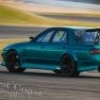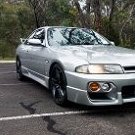My R33 Rolls too much! (track preparation)
Announcements
-
Similar Content
-
Latest Posts
-
By Dose Pipe Sutututu · Posted
I love saying Samsonas lol. Maybe it's because I secretly want one, but also don't want to sell a kidney. -
My budget has already blown way out but I've got most of the big-ticket items out of the way haha I just got the box back from the shop, got them to inspect it and install one of those refresh kits with all new syncros and bearings so should feel much nicer. But yeah if there's a weak point it'll be the gearbox, I'm gonna roll with it for now and hope it holds together. Do have an Xtreme organic sprung twinplate clutch to go in so if/when the box lets go I'll be back open for suggestions haha
-
Dose salivating at the prospect of being able to recommend a gearbox upgrade!
-
By Dose Pipe Sutututu · Posted
I sense an out of control build thread coming up lololol. That 450kW goal will end up being 600 to 700kW LOL. -
Nice, thanks for sharing your progress....that's a pretty long list you are putting into it!
-








Recommended Posts
Create an account or sign in to comment
You need to be a member in order to leave a comment
Create an account
Sign up for a new account in our community. It's easy!
Register a new accountSign in
Already have an account? Sign in here.
Sign In Now